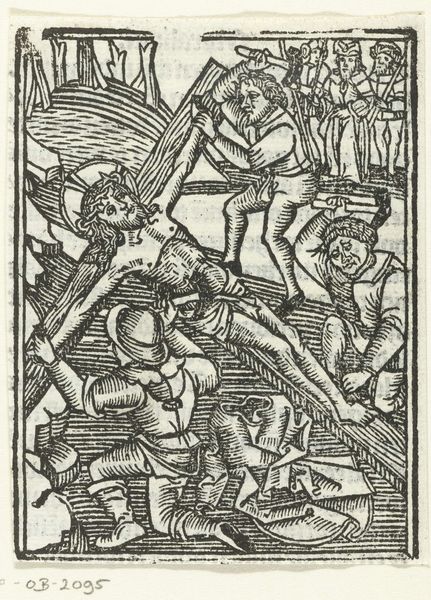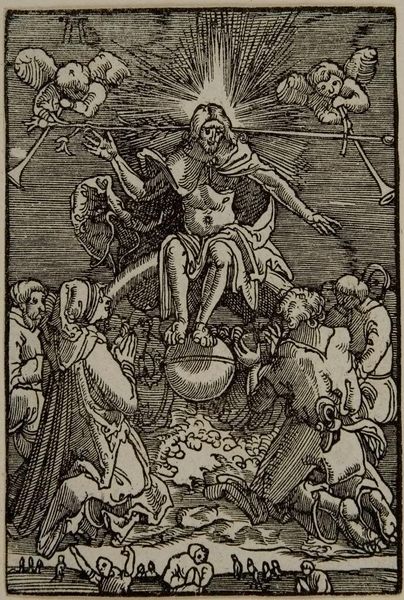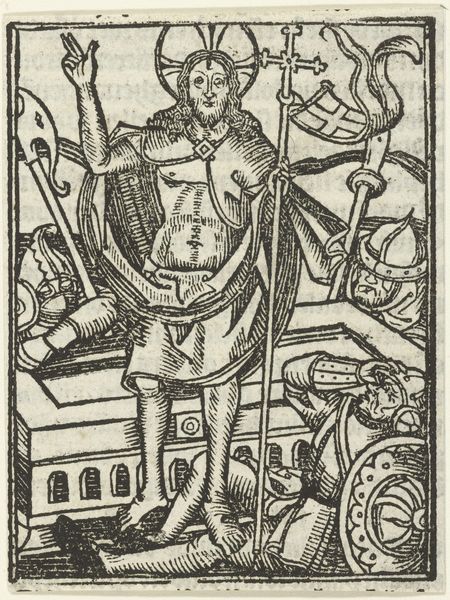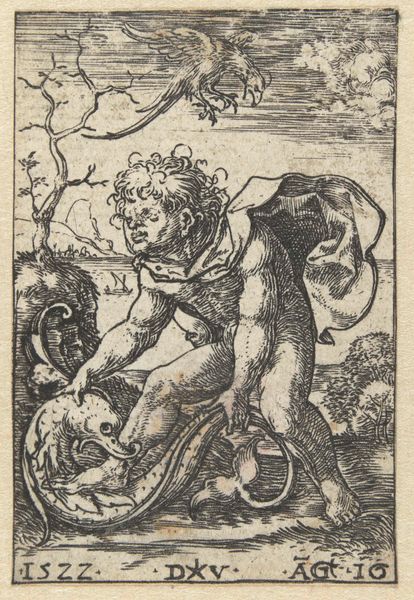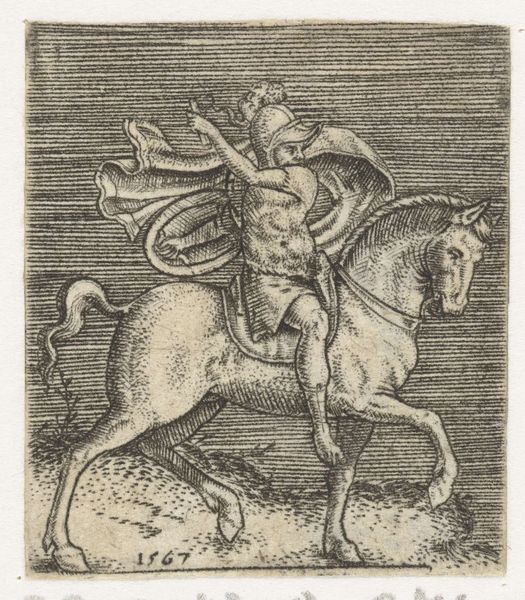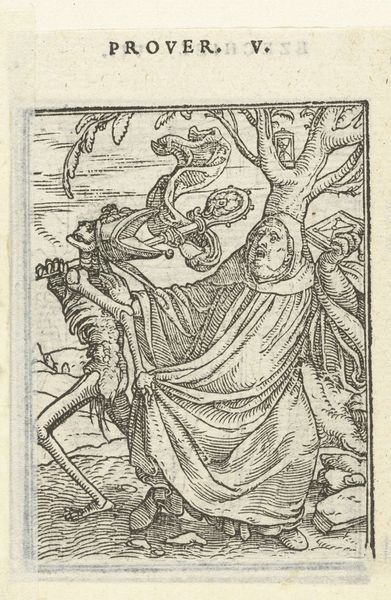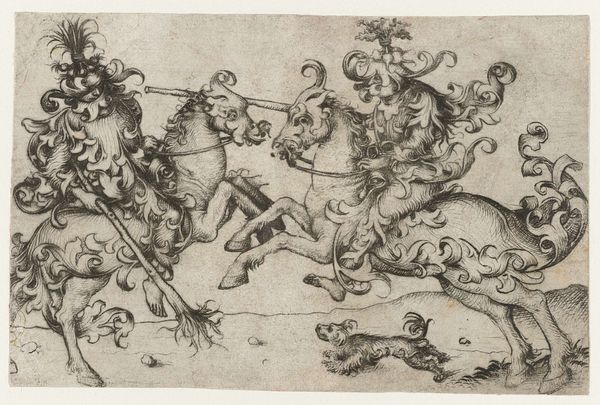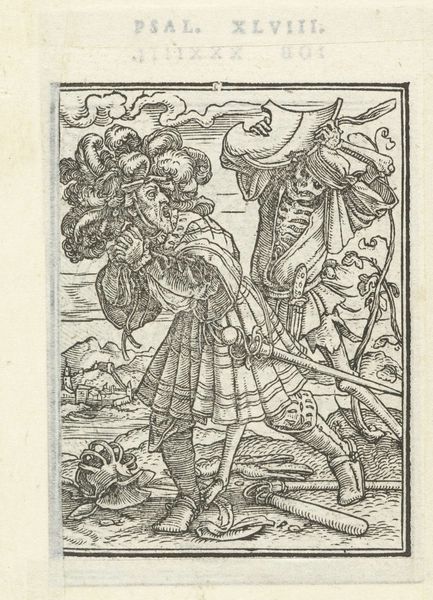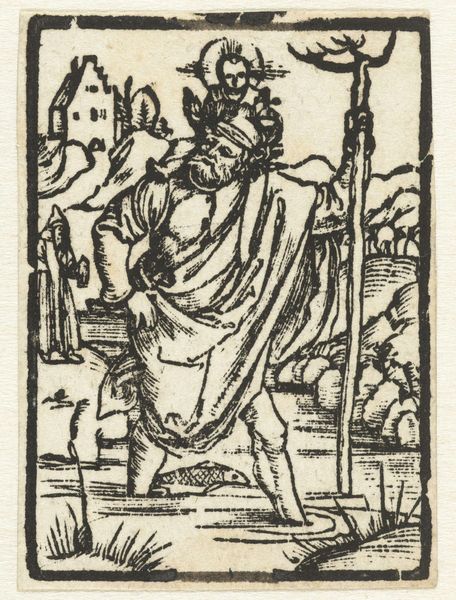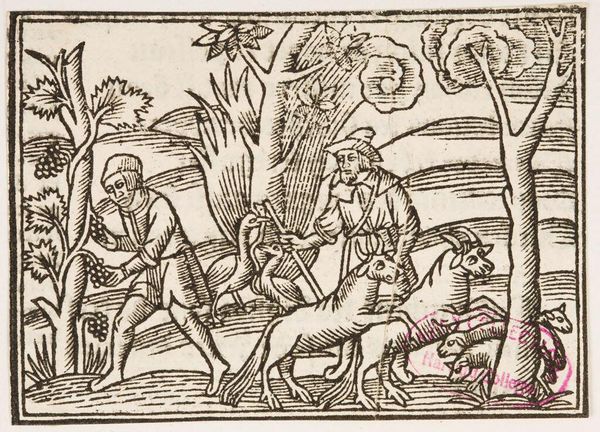
print, woodcut, engraving
#
narrative-art
# print
#
figuration
#
woodcut
#
history-painting
#
northern-renaissance
#
engraving
Dimensions: height 62 mm, width 44 mm
Copyright: Rijks Museum: Open Domain
Curator: What a striking image. This is Albrecht Durer’s woodcut, "Saint George and the Dragon," created in 1503. You can find it here at the Rijksmuseum. Editor: It’s incredibly dynamic! The sheer activity, all rendered in such stark black and white, makes it almost vibrate with energy. Curator: Absolutely. The choice of woodcut as a medium is crucial. Durer, as a northern Renaissance artist, understood the power of printmaking. It allowed for the mass production and distribution of images, solidifying his artistic reputation and spreading humanist ideas. Think of it as the social media of the 16th century! Editor: I am especially drawn to the composition. The dense lines create form but they are also creating what might otherwise have been perceived of as tonal subtlety. How very deliberate given the materials used! And I suppose that dissemination point is essential, enabling him to create an image and exert influence that extended beyond courtly circles. Who was the intended audience? Curator: Good question. While initially aimed at an educated elite, engravings like these, especially depictions of Saint George, resonated with a wider public. George represented a protector, a symbol of courage against adversity – themes applicable across societal strata especially during periods of war and uncertainty. Editor: It’s fascinating how Durer uses the constraints of the medium, and what that means about production and reception to underscore particular visual elements to highlight class anxiety. I appreciate your illumination of its dual existence both as "high" art and something akin to printed ephemera or propaganda! Curator: Exactly. The "politics of imagery" are always present. In this case, Durer masterfully employed popular appeal through the venerated figure of Saint George while simultaneously showcasing his own skill and artistry. It's an advertisement for the printing industry of its time, too. Editor: Precisely. Analyzing "Saint George and the Dragon" illuminates not just Durer’s talent, but the era's socio-political and artistic complexities. It’s a testament to the power of art as a force in public life and material history. Curator: It’s the story of process as social mirror – that the medium *is* the message. This print continues to challenge preconceived notions.
Comments
No comments
Be the first to comment and join the conversation on the ultimate creative platform.
